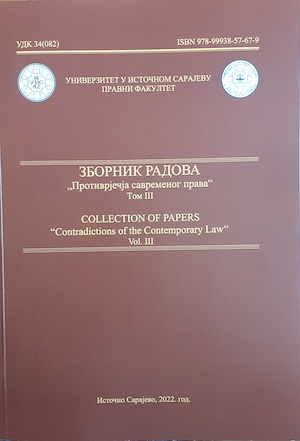Траст: англосаксонски институт у европскоконтиненталном праву?
Trust: Anglo-Saxon Institute in European Continental Law?
Author(s): Milica Ristić
Subject(s): Law, Constitution, Jurisprudence, EU-Legislation
Published by: Правни факултет Универзитета у Источном Сарајеву
Keywords: Trust; Legal transplants; Piae causae; Anglo-Saxon system; European continental system;
Summary/Abstract: According to the Hague Convention on the Law Applicable to Trusts and of their Recognition in 1985, a trust is defined as an legal relationship arising from legal transactions inter vivos or mortis causa, which is created by the founder (settlor) by placing certain funds (assets) under the control of the trust (trustee) in the interest of a third party (beneficiary) or for the realization of a special purpose. As a typical product of Anglo-Saxon legal system, it is impossible to understand trust without knowledge of its legal-historical development. However, while the trust undoubtedly owes its affirmation and rise to the Anglo-Saxon casuistic spirit, searching for its roots can lead to interesting connections and legal transplants in relation to Roman, Salian and even Arab law. Particularly interesting are the comparisons of a special type of trust established for charitable purposes (charitable trust) and an institute which in European continental law is usually called a foundation or endowment, and which derives its origin from the Roman-Byzantine institution known as oiae causae. By analyzing the development of these two institutes and comparing the positive legal norms that regulate them in different legal systems, this paper will try to show whether a particular Anglo-Saxon institute may already exist in European continental law disguised under other names and whether the differences between the two major world legal systems, at least in this respect, is as essential and insurmountable as is often pointed out in legal theory.
Book: Зборник радова "Противрјечја савременог права" Том III
- Page Range: 326-343
- Page Count: 18
- Publication Year: 2022
- Language: Serbian
- Content File-PDF

